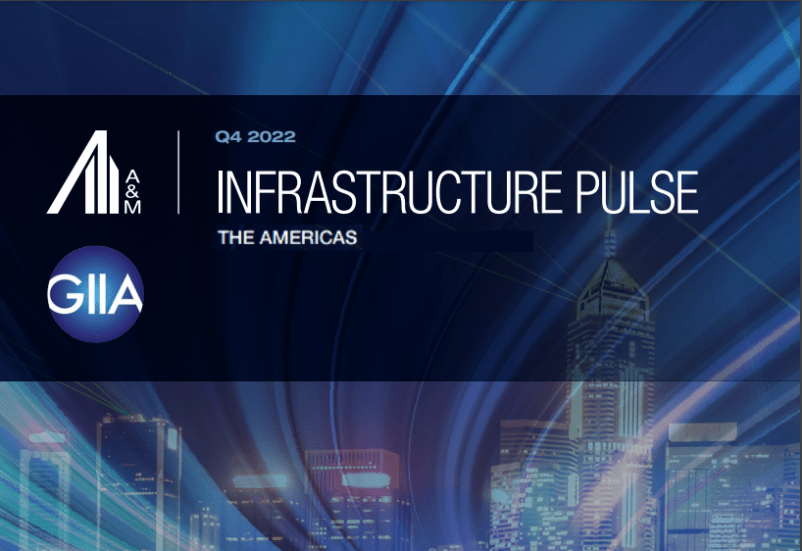Breadcrumb
Pulse Survey Q4 2022: The Americas
US tops infrastructure investor league table as funds seek green opportunities

- Q4 2022 Pulse report from Global Infrastructure Investor Association (GIIA) and Alvarez & Marsal shows dip in US investing intentions though nation still tops Americas & Europe league
- Drop in deal activity expected as energy crisis, rising inflation, higher borrowing costs and ongoing supply chain disruption weigh on plans
- Investors double down on net zero commitments as COP27 gets underway
Inflationary pressure is a bigger concern for investors across the Americas than the cost of debt, supply chain disruption or skills shortages, according to GIIA’s latest Pulse study.
The new report finds that the US remains the most attractive destination for investors across the Americas and Europe, although some positivity has fallen away since Spring of this year.
Asked to rank locations by appeal on a scale of +5 to -5, the country posted an average of +2.59, ahead of neighbours Canada (+1.55) as well as Mexico, Brazil and Latin America (excluding those two countries) where negative readings were recorded.
That compares to European league leaders the Nordics (+2.18) and DACH region, covering Germany, Switzerland and Austria (+2.04).
More widely, investors across the Americas report a challenging fundraising environment, with sentiment towards equity raising down more than two points on last quarter to +0.09. Sentiment around debt-raising has dropped even further, falling more than three points over the last year to -0.43, the first negative reading in the survey’s history.
Respondents largely state that they are focussed on investment rather than fundraising or disposals. The amount of dry powder that global infrastructure investors hold is estimated to have quadrupled to just shy of $300bn in the ten years to 2021.
Asked to rank the severity of challenges affecting existing Americas portfolios on a scale of 1-5, respondents collectively put inflation (3.45) above supply chain disruption (3.36) and the energy crisis (3.05). Inflation is an even greater concern with regards to new opportunities (3.82).
Despite the challenges faced, investors are doubling down on investments aimed at connecting communities and achieving net zero as the COP27 summit gets underway: communications as well as emerging sustainable tech, such as battery storage, are ranked as the most appealing prospects by sector (at +2.41 and +1.91 respectively) alongside railways (+1.82) and last mile utilities (+1.45).
More than half (55%) of respondents are pledging to invest $500m or more to achieve net zero carbon emissions across their European portfolios over the next five years. One in ten (10%) expect to deploy $5bn or more to green projects.
Widening climate friendly incentives (3.44) and reforming the regulatory environment (3.38) are seen as the most effective routes to spurring net zero investments.
GIIA CEO Lawrence Slade said: “As the COP27 summit gets underway, it’s positive to see so many institutional infrastructure investment funds reiterating their commitments to net zero targets despite myriad challenges faced.
“Right across the US, we’ve seen the Infrastructure Investment and Jobs Act as well as the Inflation Reduction Act already serving as catalysts for change. Regardless of what happens tomorrow, it’s critical that delivery of these game-changing pieces of legislation continues apace.
“The dry powder is there. We now need maximum certainty and the right incentives to mobilise the trillions of dollars’ worth of investment required to achieve net zero.”
Alvarez & Marsal Managing Director and Co-Head of U.S. Energy & Infrastructure Transaction Advisory Group Jay Moody said: “The Q4 2022 survey shows the dramatic shift in infrastructure investors’ mindset as rising interest rates, high inflation, political uncertainty, and economic turmoil all take their toll throughout the globe.
“Since both the debt and equity fundraising environments became more difficult in the last six months, investors may spend more time focused on operational improvements while the financing environments sort themselves out.
“There will still be plenty of transactions in the infrastructure space, because the needs are enormous, but it will require both buyers and sellers to agree that the expected return requirements have changed in the current interest rate and risk environment.”